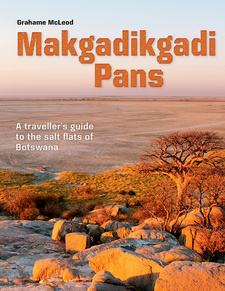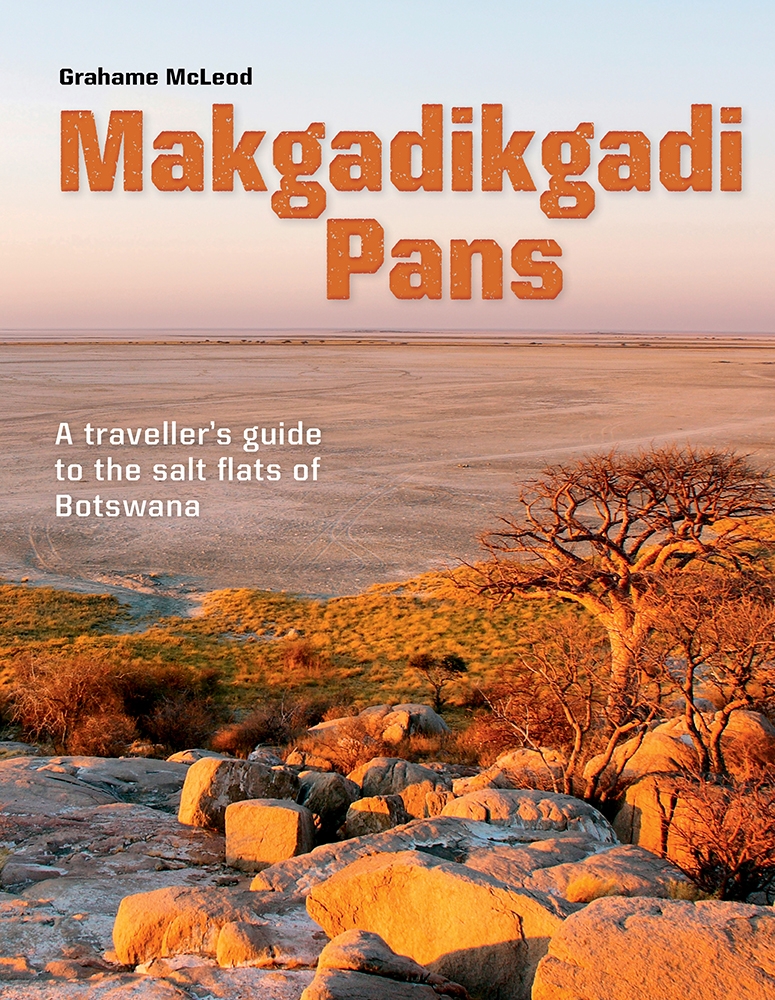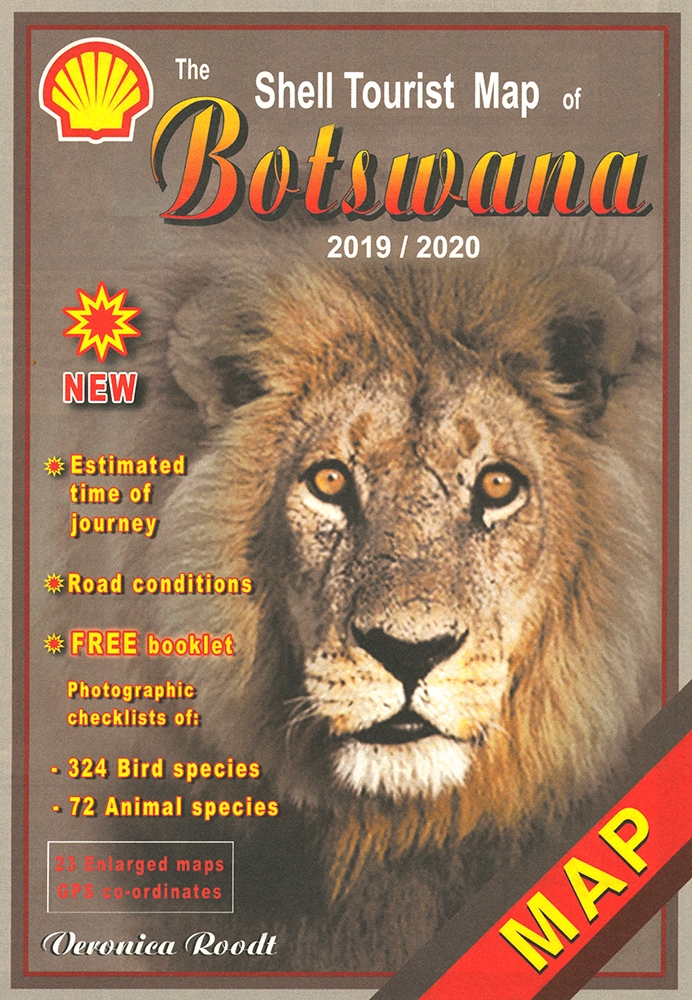Makgadikgadi Pans: A traveller's guide to the salt flats of Botswana by Grahame McLeod

Makgadikgadi Pans: A traveller's guide to the salt flats of Botswana, by Grahame McLeod. Penguin Random House South Africa. Imprint: Struik Travel & Heritage. Cape Town, South Africa 2019. ISBN 9781775845577 / ISBN 978-1-77584-557-7
Makgadikgadi Pans: A traveller's guide to the salt flats of Botswana by Grahame McLeod is an inspiring read and packed with more than 200 photographs. It includes detailed full-colour maps, advice on where to stay, activities and events throughout the year, as well as travel details and contact information.
Preface to Makgadikgadi Pans: A traveller's guide to the salt flats of Botswana by Grahame McLeod
The tar ended at Mmatshumo village, some 30 kilometres from I the mining town of Letlhakane, itself a remote outpost in Botswana's Kalahari Desert. Here a sign pointed vaguely northwards to 'Lekhubu 45km'. I followed the sandy track through desolate mopane scrub for 5 kilometres to a lookout platform. From here, a strip of white was visible along the distant horizon. It was my first sighting of Sowa (sometimes spelt Sua) Pan, one of the two major salt flats that make up the Makgadikgadi Pans. The track then zigzagged down towards the plains that surround the pans. For the next 9 kilometres, the terrain varied from hard calcrete to loose sand. I approached one of the many small pans dotted around Sowa. Here the track split into two and, with no signpost in sight, I took the right-hand one. For the first few kilometres all was well until I saw deep vehicle ruts ahead and a darkening of the pan surface. The wheels of the 4x4 began to spin. In the nick of time I made a U-turn and was able to escape the pan surface's wet clay. The thought of being stuck out here is not one to relish; I have heard of vehicles that have sunk down to their axles in the mud, or even disappeared entirely (the clay in the pans can reach a thickness of up to 100 metres), never to be seen again. I returned to the junction and took the left-hand track across the same pan. The surface was hard and it did not take long to reach a veterinary fence, a little way beyond the pan's shoreline. The track continued through undulating grasslands to the edge of Sowa Pan, from where it was a final quick run of 17 kilometres across the white sea of salt to my destination - Lekhubu Island, its iconic rocky outcrops looming in the distance. On the island I pitched camp in the shade of a pair of baobab trees - my idea of heaven. The dust in the air made for a great sunset and, as the evening wore on, the western sky changed from blue to shades of orange and red, and finally purple. After supper, the time had finally come to retreat to my camp bed. This served as a front-row seat for the nightly star show - a 360-degree view of thousands of stars that appeared as specks of ice in the jet-black sky. This was not my first trip to Lekhubu Island, but it was the one that made me extend my wanderings around the Makgadikgadi, exploring not only the pans, but also the villages that skirt their perimeter, the Mosu/Kaitshe Escarpment with its spectacular views, the wild expanse of the Makgadikgadi and Nxai Pans National Park, and the lodges, inns and camp sites that cater for travellers seeking both solitude and adventure. Each trip was a voyage of discovery, further revealing the complexities of the landscape's geological history, the vegetation that thrives in this semiarid region, the animals that have made this place their habitat and the people that have settled here. From these excursions was born Makgadikgadi Pans: A traveller's guide to the salt flats of Botswana, a guide not only to the region's well-known wonders, but also to its hidden gems and its more remote past. I hope it will serve as a keepsake of a memorable and rewarding journey to this timeless place of peace, solitude and intense silence. In this vast expanse of salt, savanna and big open sky, you can truly gain another perspective on life. [...]
Grahame McLeod was born in Malaysia and educated in Wales. He worked as an exploration geologist in Botswana before completing an MSc degree in Agricultural Economics at the University College of Wales, Aberystwyth. Since then he has taught agriculture at secondary schools and colleges of education in Botswana and authored a number of textbooks and resources on geography, agriculture and the environment. Currently living near Francistown in Botswana, he works as a freelance travel writer, author and editor.
This is an exceprt from Makgadikgadi Pans: A traveller's guide to the salt flats of Botswana, by Grahame McLeod.
Title: Makgadikgadi Pans
Subtitle: A traveller's guide to the salt flats of Botswana
Author: Grahame McLeod
Publisher: Penguin Random House South Africa
Imprint: Struik Travel & Heritage
Cape Town, South Africa 2019
ISBN 9781775845577 / ISBN 978-1-77584-557-7
Softcover, 19 x 24 cm, 136 pages, over 200 colour photos, several maps
McLeod, Grahame im Namibiana-Buchangebot
Makgadikgadi Pans: A traveller's guide to the salt flats of Botswana
Makgadikgadi Pans. A traveller's guide to the salt flats of Botswana is an informative, practical and user-friendly on-the-spot guide to the Makgadikgadi Pans.
Weitere Buchempfehlungen
The Shell Tourist Map of Botswana
Die Shell Tourist Map of Botswana ist eine über viele Jahre ausgreifte, sehr zuverlässige Karte für den Urlaub in Botswana.


